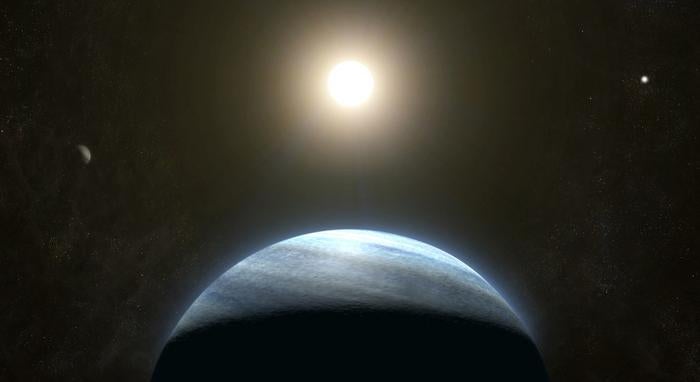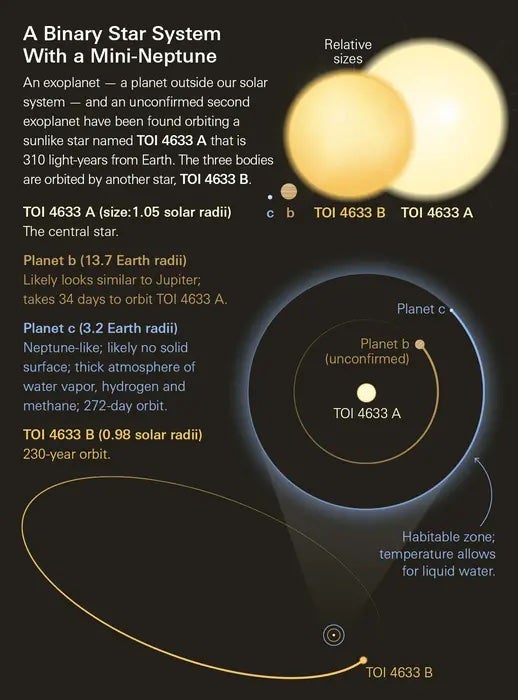
A team of professional and citizen scientists has found a Neptune-like exoplanet orbiting one of two Sun-like stars in a binary system. The planet, dubbed TOI 4633 c (and nicknamed Percival), was identified using data from NASA’s Transiting Exoplanet Survey Satellite (TESS).
The exoplanet was spotted when it passed in front of its host star, TOI 4633 A, temporarily dimming its light like a solar eclipse. The find, published in The Astrophysical Journal, might help astrophysicists understand how planets form around and orbit multi-star systems, opening the door to even more places we can search for exoplanets.
“Finding planets in multi-star systems is crucial for our understanding of how you can make different planets out of the same material,” said study first author Nora Eisner, a researcher at the Flatiron Institute’s Center for Computational Astrophysics, in a press release.
Citizen science
Anyone with internet access can easily take part in the online Planet Hunters TESS program, which is part of the larger Zooniverse platform. Oftentimes in science, people are better at spotting certain patterns than computers. In the case of exoplanets, this is true when it comes to exoplanets with long orbits — human volunteers are more likely to flag these than an algorithm which find such signals harder to identify.
About 43,000 citizen scientists worldwide have aided researchers in cataloging 25 million different objects as part of the project, including TOI 4633 c. Fifteen volunteers noticed the new exoplanet in the data they were examining. So, Eisner and her team decided to take a closer look at it. They identified small wobbles in the host star — a sign that another object is orbiting close to the star. To confirm if this was the case, the team looked at archival data covering nearly 120 years to discover that the object causing the wobbles was another star, now named TOI 4633 B. It orbits TOI 4633 A every 230 years.

The newly discovered exoplanet takes about 272 days to complete one revolution around TOI 4633 A. It is located in the star’s habitable zone, the region around a star where temperatures allow a planet to host liquid water on its surface. This makes TOI 4633 A the brightest star yet known to hold a planet in its habitable zone. However, you could not walk on the exoplanet because it has no solid surface. But if, say, TOI 4633 c had a rocky moon, that world could potentially support life on its solid surface, the researchers said.
New planetary systems
A study from 2017 published in Nature Communications found that Earth-like planets in binary systems could be habitable if they orbited at the right distance. The research was based on models of the Kepler-35 system, where two stars host a Saturn-like planet.
Stars form when cold interstellar gas and dust gathers and collapses; planets are formed from the leftovers in this process. In many cases, there is enough gas and dust to form two or more stars at once, which means astronomers expect that exoplanets with two suns are not uncommon.
“If we were able to constrain where the planets orbit, it would really offer a stepping stone to open up our understanding of exoplanet formation,” Eisner said. “It could also possibly help us someday be able to look at a star and its properties and make some guesses about what planets are potentially orbiting in that system.”









